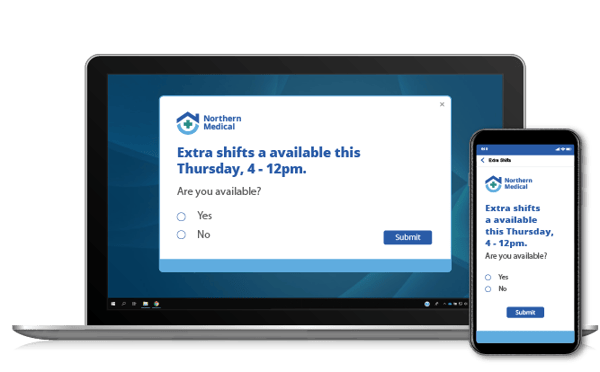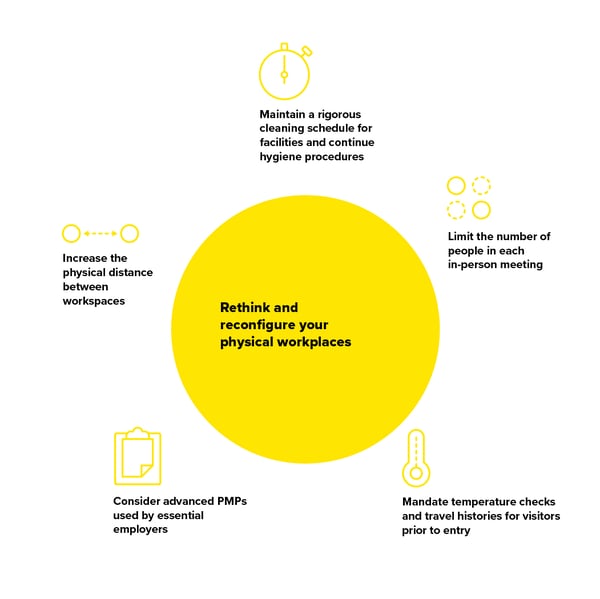
A return to regular work is imminent for many employees across the world, as restrictions in place as part of the coronavirus response are reviewed.
It’s a welcome move for businesses that have struggled through the disruption of remote working, social isolation and travel embargoes.
But a reintroduction to office life can be dangerous if mishandled. Businesses that fail to properly plan for this risk a fitful, fragile and partial transition.
Despite this warning, only 10% of executives surveyed recently have done “extensive” planning.
CEOs planning to reintegrate back into their regular business premises need a plan that maintains safety, manages resources and rebuilds morale. Below are 7 essential considerations to ensure a successful transition back to work.
1. Manage employee numbers
Large volumes of employees returning to a shared workplace represents a huge risk for the spreading and contracting of viruses. Managing the number of workers will be critical to protecting workplace health. The higher the number, the higher the risk. When it comes to COVID-19, it really is a numbers game.
Plan a staggered reintroduction to the office. Establish a process such that a rotating group of employees work from the office every few days. Create these groups across functional lines, both to ensure coverage across roles and to support employee distancing. Resist the temptation to open the doors to everyone on the same day – the risk isn’t worth the grand gesture.
Restricting employee numbers in this way will create a greater need for shift coverage. Beyond healthcare and similar essential services, this will also affect call centers, frontline retail, manufacturing and other industries. Businesses will need to manage this by informing team members in real-time and across all devices through tools like registration alerts.

2. Maintain remote working
Despite the availability of regular workplaces, it’s prudent for businesses to continue some form of remote working for several months (at least). The reasons for this are financial and practical.
Rolling lockdowns and exits may continue for some time in regions where the threat of COVID-19 remains high. Seesawing back and forth between central and remote working states is hugely disruptive, but minimized by a workforce accustomed to and practicing it throughout.
Many organizations will elect to keep staff working from home for economic reasons. Others may have a return to remote working forced upon them if a staff member suddenly contracts the virus. This reinforces the importance of an effective communications platform to connect with employees working from home.
3. Rethink physical setup
Reopening of workplaces won’t entirely remove all restrictions imposed during COVID-19. Businesses will still need to observe regulations governing social distancing, employee gatherings and hygiene practices. It’s likely that pre-virus working environments are unsuited to these new restrictions.
Businesses will need to be proactive in reconfiguring their office spaces. The requirement for 6 feet between employees impacts on individual seating arrangements and shared spaces like cafeterias. Real estate firm Cushman & Wakefield is one company taking a lead with this, testing a new “Six-Feet Office” with transparent shields dividing desks and floor markers directing foot traffic.
Some considerations for rethinking physical workplaces have been summarized by Forrester research.
 (Source: Forrester)
(Source: Forrester)
4. Rebuild workplace morale
The human component of returning to office life requires as much focus as the practical one. For staff who have been away from their workplaces for weeks or months, returning will feel unsettling. Much may have changed in the interim. Some of their old teammates may not be returning at all.
Successful businesses thrive on motivated workforces, so it’s important leaders invest efforts to rebuild workplace morale. Acknowledge any employee concerns and dispiritedness and treat announcements regarding the new operating environment with sensitivity.
There are many ways businesses can improve workplace culture, including promoting achievements, encouraging cross-functional collaboration and painting a positive vision of the future. When the time is right, and regulations permit, consider a fun team-building event to lift spirits and let off some steam.
5. Review infrastructure needs
For most businesses, the nature of how they work will take many months to return to what it was prior to COVID-19 disruption – if it returns at all. That means there are now likely to be deficiencies in the infrastructure and support that employees need to perform their jobs.
Effective platforms to enable employee communication, connectivity and collaboration are essential to sustain business success. Every department should review their operations and identify any areas of deficiency – especially in technology and communication infrastructure. Research, evaluation and implementation should be fast-tracked to avoid a crippling loss of productivity.
Investment in these areas is being accelerated by IT teams worldwide to support the thousands of employees working from home. A survey of CIOs and senior tech executives revealed that it now makes up more than 30% of annual IT budget for a number of organizations.

6. Maintain regular communication
The COVID-19 situation has forced organizations to step up their communications. Many have communicated with their staff more in the last couple of months than they traditionally do under normal conditions. The value of internal communications during this crisis has been recognized by C-suite leaders.
Returning to usual workplaces isn’t the time to relax this. Progress that has been made on business initiatives while working remotely must continue seamlessly when back in the office. It’s easy for a change in environment to cause a disruption of focus, but keeping lines of communication open helps overcome this.
Maintaining a regular frequency of communications also provides reassurance to employees who will naturally have questions about the future of the business and their roles. Two-way communication channels, such as employee surveys, should be introduced to capture workplace sentiment around how staff are feeling and what they need.

7. Embed your learnings
The changes to work enforced by COVID-19 have delivered some benefits to businesses. Many have uncovered stronger collaboration within and across teams, more productive working routines and a reinforcement of positive health practices. Smart businesses will now seek to embed the lessons learned into how they conduct business in future.
Foster virtual collaboration in person by encouraging cross-functional committees and rearranging seating arrangements to enable this. Break down silos by regularly communicating the status of key projects for each functional area. Maintain healthy workplace hygiene by reminding sick staff to stay home – particularly important with the continued risk of COVID-19 infection.
A survey conducted towards the end of March revealed that 41% of employees were afraid to go to work because of the risk of exposure. Don’t let inattention now compromise public health or the success of your reintroduction to office life.
Return to work programs are essential for businesses to develop now. Taking these considerations in mind when developing your plan for transitioning back into office life will help ensure yours is a fruitful return – not a fragile one.


